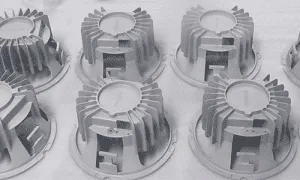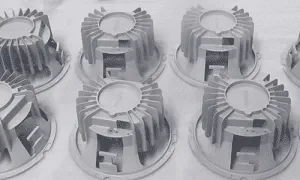Metal 3D printing is one of the most commonly used methods these days, which is carried out by numerous industries to manufacture metal parts.
The need for metal parts is eminent in several industries and to have them manufactured from scratch is highly dependent on the process of 3D printing.
About metal 3D printing
Metal manufacturing is an ancient technique that has been an essential aspect for several businesses. Every industry is highly dependent upon metal part manufacturing, and this calls for a lot of innovation as well.
Although other methodologies are also very commonly observed in manufacturing metal parts, 3D printing has no limitations. The best thing about this process is that no matter how complex the parts are, it tends to manufacture them.
As time passes on, new and improved metal parts are needed for different processes, and to cater to this aspect, 3D printing on metals is used worldwide much more successfully.

The main advantages of metal 3D printing
3D printing has gained a significant level of popularity all over the world. There are numerous metal-based parts manufactured using this method, and therefore, it is backed with several advantages.
A few of the common advantages associated with 3D printing consist of the following: these make the demand for 3D printing high all over the world.
- 3D printing can cater to many complexities involved in a metal part. It is such a flexible method to manufacture metal parts that no matter how many curves and geometrical patterns are present in part, it will deliver the past precisely.
- It is a rapid method of getting a metal part ready. In a matter of a few hours, a proper metal part may be manufactured under this process, and the best thing is that this way, rapid prototyping is supported perfectly.
- There is no requirement to keep a stock of metal parts in excess. The process is so quick that many manufacturers usually produce a metal part on demand. The backup of the 3D design is already present in the CAD software, and it may be printed immediately.
- It consists of no wastage of material; the object to be printed only comes out by 3D printing. It works with printing in a layer-by-layer method and doesn’t waste the material.
- It is a reasonably environment-friendly method since there is no wastage; therefore, the production involves no damage to the environment due to scrap.
- 3D printing is very affordable compared to other methods used for manufacturing metal parts. The process is quick, does not require many details, is quick and concise, and hence no stocks are needed. So, overall it reduces the cost per unit of production.
- Metal parts produced using 3D printing are solid and, at the same time, light in weight. This is a required demand for metal parts in the aerospace industry and hence is a favorable aspect of 3D printing.
Disadvantages of metal 3D printing
Anything that comes with advantages also has some disadvantages as well. Hence, when it comes to 3D printing, there are a few disadvantages that need to be taken into account.
- The cost of raw metal, which is in the powdered form, is higher than the solid-state. In the case of 3D printing, powdered metal is the only raw metal that may be used.
- If regular parts are required to be printed using 3D printing, it may take a lot of time, and the process is much slower.
- Investing in a 3D printer for a metal manufacturer requires a good amount of investment; also, operating it would involve a lot of training beforehand.
- The size of 3D printers is small; hence to manufacture huge metal parts, a 3D printer may not be the right choice.
- Fresh metal powder is required to add to the printer for each layer which also causes a lot of expense to increase.
Main technique
3D metal printing is a vast concept, and several technologies are involved in that kind of metal printing. The common ones include Direct Metal Laser Sintering, DMLS, Electronic Beam Melting(EBM), and Selective Laser Melting (SLM).
What is DMLS? What can it be used for?
As DMLS stands for Direct Metal Sintering, it is a very commonly used technology for manufacturing metal parts using the 3D method of printing. In this process, the metal is not melted to the extent of liquefaction but is used in the sintered form.
Layer by layer, metal parts are manufactured using the metal in a porous form rather than a liquid form. It heats the metal to a specific temperature but in a way that it doesn’t melt yet creates layers of metals.
Applications of DMLS
The method of DMLS is commonly observed in the manufacture of metal parts used in medicine and several other metal-based tools. All those parts that require undercuts, draft angels, and cavities may also be manufactured using DMLS.
The aviation and aerospace industry is also dependent on DMLS to manufacture the high-performance parts used in these industries.
What is SLM? What can it be used for?
SLM stands for Selective Laser Melting, and as the name suggests, this technique works on the method of melting the metal to manufacture metal parts. It works in an inert gas environment supported by 3D printers.
The metal parts manufactured using this technique are usually very much suitable in terms of their strength and perfection. Metal parts made using aluminum or titanium metal are usually manufactured using the SLM technique of 3D printing.
Application of SLM
SLM has several applications in terms of manufacturing mechanical parts. These parts require more strength, so SLM is suitable for manufacturing them. Metal parts used in aerospace, aviation, and medical are manufactured using SLM.
On the other hand, components of metals such as propellers and gears are also manufactured using this method of 3D printing.
What is EBM? What can it be used for?
Electronic Beam Melting is a process of 3D printing in which, instead of a laser, electronic names are used for printing. It is a speedy process, faster than the laser, and can produce specific objects.
The materials used commonly with this technology are titanium and cobalt. In this method, the powdered form of metal is first melted, and layer by layer, a metal part comes into being.
Applications of EBM
EBM technique is used in manufacturing metal parts for the industries that require precision metals. We can commonly see the implementation of this technique in the space industry; aircraft and specific engine components may also be manufactured using it.
The Best Metal 3D Printing Materials for Additive Manufacturing
Manufacturing metal parts using 3D printing requires using the powder form of metals. The best thing about this kind of metal manufacturing is that almost all metals are suitable in this case. The production of different metal-based parts is possible, and each metal has its properties to offer.
The best options for 3D printing for different industries may comprise the following.
Stainless Steel
Stainless steel is a highly suitable metal for manufacturing metal parts through 3D technology. The parts manufactured out of this technique are very strong and durable. Stainless steel is a material that neither rust nor corrode.
It is also a suitable welding material and offers the properties of ductile and malleable nature. So, many such parts that are prone to friction are manufactured using stainless steel using 3D printing.
Tool Steels
Metal-based parts that require long-term usage may be manufactured using tool steels. Tool steels work well with 3D printing. It is a very strong and durable form of metal used efficiently to manufacture all such parts that require long-term use.
It shows rust-free and anti-corrosion properties, one of the essential requirements for numerous metal-based parts, and hence it is used in different industries. Tool steel is used by several such industries that require molds, cutting tools, and stamps to be produced using 3D printing.
Titanium
Titanium is one of the most suitable metals commonly used with 3D printing methods. This material is subjected to a negligible thermal expansion, and its strength ratio is impressive.
All such metal-based parts that require ample strength may be manufactured using titanium. In comparison to steel, the strength of titanium is more or less the same, but it is a very lightweight metal and hence is a suitable choice for several industries.
The aviation industry is highly dependent on titanium metal to manufacture metal parts using 3D printing techniques.
Inconel 625
Inconel 625 is an alloy manufactured using chromium and nickel in combination. This metal is used in 3D printing using either DMLS or SLM method. This alloy comes in the form of a fine powder that is melted using a laser and tends to produce metal parts layer by layer.
This metal resists corrosion as well as extremely high temperatures. The manufacturing carried out using this metal is very strong. It is used in manufacturing functional prototypes and is very easily printed.
Conclusion:
3D printing has various methods involved, and many industries nowadays depend on this aspect of manufacturing metal parts. It is among the quickest and easiest methods that helps to manufacture metal parts.
Boenrapid is a leading name in metal manufacture carried out through 3D printing and has been offering these parts for numerous industries. All kinds of methods involved in 3D printing are offered SLM, EBM, and DMLS.
The quality of metal used and the versatile choices of methods involved offer a lot of variations to be catered to. Several industries tend to get their metal parts produced using 3D techniques offered by Boenrapid.

